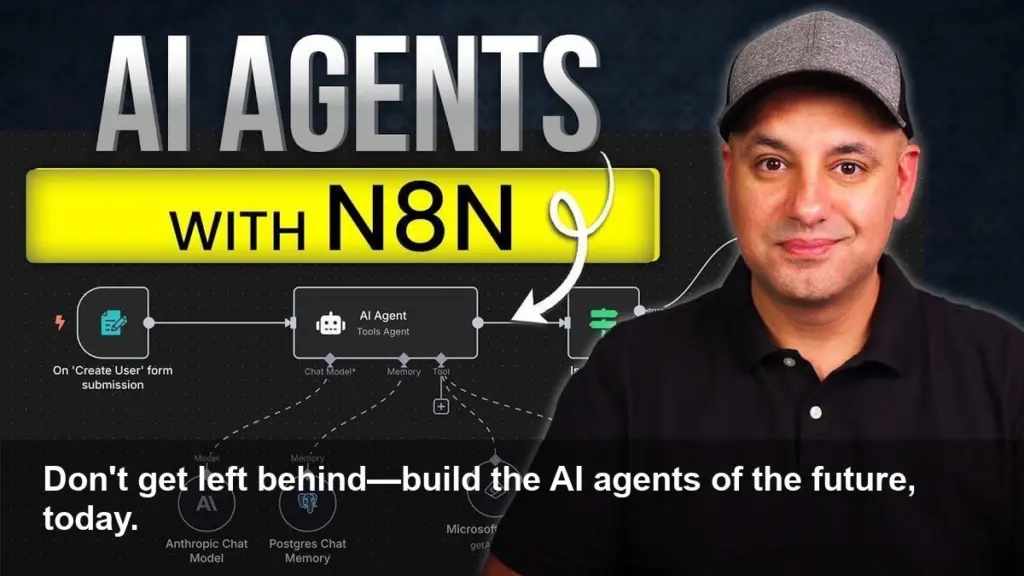- Unlock AI-Native Automation: Learn how n8n has evolved into a powerful AI-native workflow automation tool, allowing you to build sophisticated AI agents without deep coding knowledge.
- Step-by-Step Agent Creation: This guide breaks down the process of building AI agents, from understanding the core components like tools, memory, and models, to practical implementation for automating complex tasks.
- Self-Hosting for Control: Discover the benefits of self-hosting your n8n instance, giving you full control over your data, security, and operational costs while scaling your AI automation efforts.
- Beyond Simple Workflows: Move past basic automation and learn to create dynamic, intelligent systems that can reason, remember past interactions, and utilize various tools to complete objectives efficiently.
The Automation Revolution is Here, and It’s Powered by AI
In the rapidly evolving landscape of digital efficiency, standard workflow automation is no longer enough. The real competitive edge lies in creating intelligent, autonomous systems that can think, learn, and act. This is where AI agents come in, and the n8n platform is at the forefront, providing the tools to build them with unprecedented ease.
Forget the days of rigid, step-by-step automation that breaks with the slightest deviation. We are entering an era of AI-native workflows, where your automated processes are not just following a script but are actively working to achieve a goal. n8n, traditionally known for its powerful and flexible workflow capabilities, has embraced this shift, integrating AI functionalities that empower users to build what can only be described as AI agents.
What Exactly Are AI Agents?
Think of an AI agent as a sophisticated bot powered by a Large Language Model (LLM) that can reason, remember, and use a set of tools to accomplish a specific objective. Unlike simple automation, an AI agent operates with a degree of autonomy. You give it a goal, and it figures out the best way to achieve it.
Core Components of an n8n AI Agent:
- Model (The Brain): This is the LLM, such as OpenAI’s GPT-4, that provides the reasoning and language processing capabilities.
- Memory (The Notebook): An agent needs to remember past interactions and results to maintain context and make informed decisions in subsequent steps.
- Tools (The Hands): These are the functions or other workflows the agent can use to interact with the world, like searching the web, sending emails, or accessing a database.
Building Your First AI Agent with n8n
Creating an AI agent in n8n is surprisingly straightforward. The platform abstracts much of the complexity, allowing you to focus on the logic and objectives of your agent. By combining various nodes, you can construct a workflow that gives your AI the tools and memory it needs to function effectively.
For instance, you could build an agent tasked with customer support. This agent could use a “knowledge base” tool to search for answers to user queries, a “CRM” tool to look up customer history, and an “email” tool to send a response. The agent, guided by its LLM brain, would decide which tool to use and in what order based on the user’s request, creating a dynamic and responsive system.
Why Self-Hosting n8n is a Game-Changer
While n8n offers a cloud version, the ability to self-host provides unparalleled advantages, especially when dealing with AI. Self-hosting gives you complete control over your data, a critical factor when handling sensitive information. It also allows for greater customization and can be significantly more cost-effective as you scale your AI operations, avoiding the premium costs associated with managed services.
By mastering AI agent creation in n8n, you are not just automating tasks; you are building intelligent systems that can fundamentally transform how your business operates. Don’t miss out on the opportunity to be at the vanguard of this technological shift.
Image Referance: https://www.geeky-gadgets.com/how-to-build-ai-agents-with-n8n/

